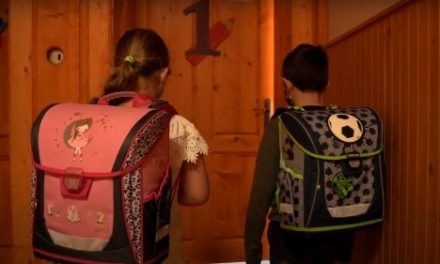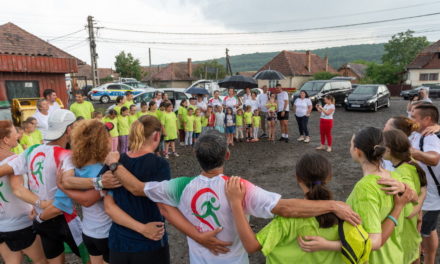During the redesign of Farkas Street in the historical center of Cluj, a statue plinth disappeared. And it turned out to be a nationalistic time bomb.
They say that history is beautiful when it is happening. Well then let us rejoice; although, as is usually the case, the citizen who experiences the events at any level is not very happy at this time: in addition to the fact that events of world-historical importance (war) are taking place right now, an affair has broken out that is geographically very local (meaning Cluj), but international in its symbolism too.
It happened that the competent authorities of Cluj decided to redesign several historic central streets. The preparations have been completed, the work has begun, the machines are still rumbling, the workers are rushing around several central streets (when).
Perhaps the most iconic street of the treasured city, Farkas utca, also took its turn. And of course there were arguments, the social network was also nicely filled with disgruntled voices (why this way, why not that way, the street stones are already crumbling, etc.), as it usually happens in all cases.
But then a big bomb exploded.
It turned out that the pedestal disappeared from under the sculpture group of the Transylvanian School located in the area between the Babeș Bolyai University (BBTE) and the building that (also) houses the Cluj-Napoca Philharmonic. (Despite the fact that, according to the news, it was still included .) Moreover, legally, since every competent forum put the stamp on the plan that the owner is free, that is, the pedestal can go in the trash.
I'm telling you, the bomb exploded, the opinions about the pedestal started to rain, mainly in the local Romanian press and, of course, on social networks.I also wrote an opinion piece on the matter. I argued why it was wrong to sweep the pedestal out from under the group of statues. I mentioned what would happen if I did that, the same thing would happen with the Matthias statue group. I also received feedback on this, saying that the pedestal of the Ladea sculpture group was not designed by Mr. Ladea at the time, but by someone else. But a certain Adriana Matei.
Okay, I can only say that the pedestal of the Matthias statue group was not designed by János Fadrusz either, but by someone else. A certain Lajos Pákei.
The statue debate turned nasty in a matter of days.
So much so that the judge in Cluj-Napoca thought it better to go to the scene... then he announced that he understood the problem, there would be some kind of pedestal there... and later, just as I was writing this text, he posted on Facebook that haha , designers, return everything, pedestal, Emil Racoviță statue, and in other respects, respect symbols, historical monuments and yes, respect each other's culture.
In the meantime, a lightning-quickly organized round-table discussion took place, where representatives of the redesign company appeared, including the architect Ernő Macalik Arnold (who, although it does not seem important at first glance, is Hungarian), architects, sculptors, university lecturers, the press, activists, citizens. And they discussed the situation at length. (For those who are interested, what happened here.) A lot of things were said there, some agreed with the sweeping of the pedestal, some did not, that's how it is . There was an opinion that this group of statues should not be standing in front of the University, but rather the statue of King Franz Joseph I (Hungarian) and King Ferdinand I (Romanian). An opinion has also been expressed that Ladea's sculpture group suggests intimacy, so it is good that it has been brought down to street level. (Well, actually, it doesn't matter what was said in the conversation, the mayor's later notice post pretty much overrides everything.)
I would like to note here that on aesthetic grounds (sorry for the joke) this work is a member of the large group of monumental sculptures. And the good old concept of a monumental statue is to look up at it. It doesn't matter who or what it is. There is no question of intimacy in this case. All the more about majesty.So, if we can't look up to it, if it loses its majesty, it's no longer monumental. In other words, the entire quality range of the statue changes. Well, I don't want to indulge in deep aesthetic analyzes here. The point is that I still do not agree with the removal of the pedestal.
But…
What has been going on in the Romanian press for a few days is... well, it is unfortunately an inevitable part of such cases. At least here in Transylvania. It's frustrating how it happens, how it can happen, but it's the reality. And the re-designers of the square forgot about this. Or they naively thought it was no longer relevant. Or who knows what was going through their heads. But now it's here and it stinks.
Specifically, the statue plinth case became an ethnic, or more precisely Hungarian, issue.
An example: the newspaper Făclia (Fáklya) in Cluj published an article, which is not free to read, but the title speaks for itself: Arnold (read Macalik Arnold) brought down the luminaries of the Transylvanian School.
the Facebook post of the Gheorghe Barițiu Historical Institute in Cluj, under the wings of the Romanian Academy, also made its way into the press. The authors of the text express their astonishment, moreover, they woke up to the fact that the Racoviță bust, which stood further down Farkas utca, in front of the former bourgeois girls' high school, now Emil Racoviță high school, had also disappeared from its place. Okay, you may be shocked, but there is also a small thing that stinks from afar. I quote:
"A truly mature community must mutually respect each other's symbols, but an urban planning initiative cannot be apropos of erasing the symbols of a community, especially the Romanian community."
And then they follow the Hungarian example of Marosvásárhely. Nope. It would be cheesy to talk about, wouldn't it, but it would be nice - if someone is already talking about the mutual respect of communities - if they also remembered
But let's get over the hypersensitivity: it would also be a sign of (mutual) respect if, for example, the ominous Iorga plaque were taken away from the Mátyás sculpture group. Because, right, it's not part of the original sculpture concept. What is also confusing: in some cases, they easily state that public sculptures are the "property" of all citizens of Cluj. In other cases, however, it seems not.that there used to be a Hungarian high school for girls.
Another, much more direct (more direct) example: the former deputy rector of the BBTE, the historian professor Ioan Bolovan, is not kidding when he says in connection with the statue case: almost the statue of St. George, also in Farkas Street, remains on its pedestal! And the removal of the Fellegvár Great Cross immediately comes to mind. Then he asks the stinking question: Doesn't anyone see the symbolism behind the gestures of these "experts"? And this is where the nationality of the designer becomes important.
And last but not least, the tricolor national defenders also appeared. They, as is their good habit, get into a fight all the way: they consider it unacceptable that the modernization of Cluj is carried out at the cost of minimizing the Romanian identity (see the case of the Ladea sculpture group and the Racoviță bust), while the Mária statue is returned to its place a few hundred meters away column which, as we know,
a symbol of an era when Romanians were not allowed into the center.
Now what can be said about that. I would limit myself to two things:
- That is why it would have been good to think about whether the pedestal of the Ladea sculpture group should be touched. Because it would have been possible to get angry at the fact that a professional case would turn into a Hungarian case in a matter of minutes.
- Even though I still don't agree with removing the pedestal, for the reasons mentioned above, I say hands off Arnold! And hands off the Hungarians! If we really consider the brilliantly (and abstractly) brilliant principle of mutual respect between communities to be valid, then dear Romanian brothers, let's see to it! For example, by making it easier for us together to make light of the nonsense of the cliques who distort the statue issue into a Hungarian issue. Then let's do it together: sweep the common spaces clean, preferably with more empathy towards each other. To which, however, the respect for the symbols of the Hungarian community is an integral part. I know it's not an easy task, but if you can do it...
Source and featured image: Főtér












